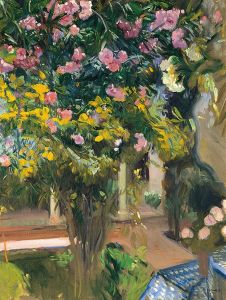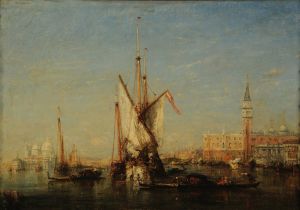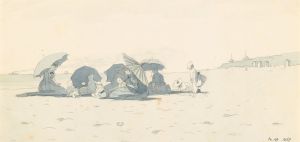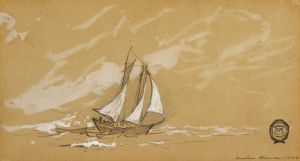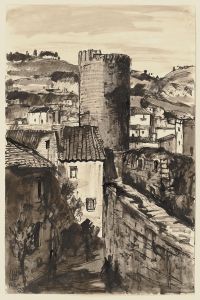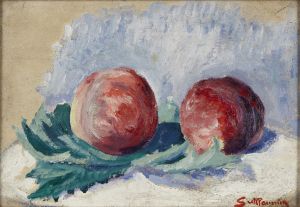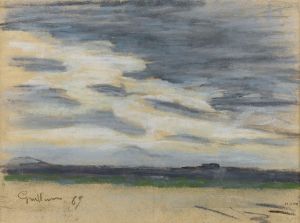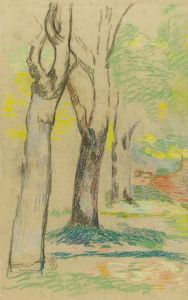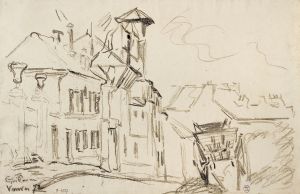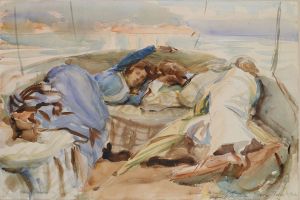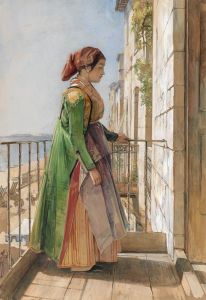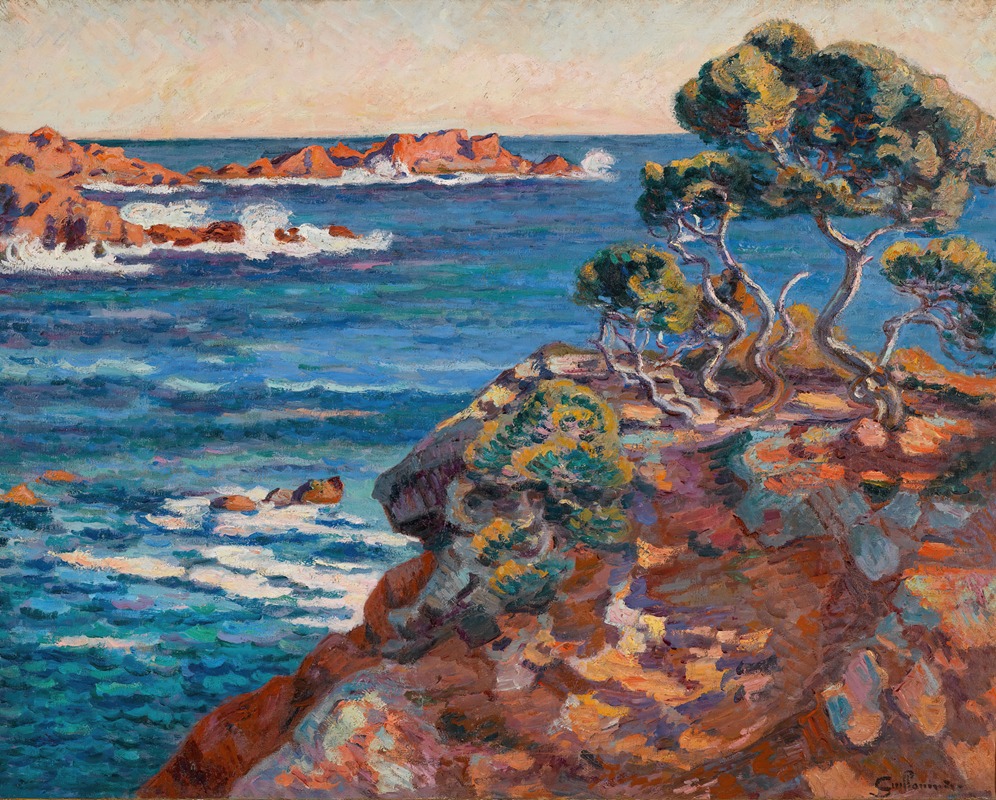
Bord De Mer À Agay
A hand-painted replica of Armand Guillaumin’s masterpiece Bord De Mer À Agay, meticulously crafted by professional artists to capture the true essence of the original. Each piece is created with museum-quality canvas and rare mineral pigments, carefully painted by experienced artists with delicate brushstrokes and rich, layered colors to perfectly recreate the texture of the original artwork. Unlike machine-printed reproductions, this hand-painted version brings the painting to life, infused with the artist’s emotions and skill in every stroke. Whether for personal collection or home decoration, it instantly elevates the artistic atmosphere of any space.
Armand Guillaumin (1841–1927) was a French impressionist painter known for his vibrant use of color and his depictions of landscapes. One of his notable works is "Bord de Mer à Agay," which translates to "Seaside at Agay." This painting exemplifies Guillaumin's characteristic style and his ability to capture the essence of natural scenery through the impressionist lens.
"Bord de Mer à Agay" is a landscape painting that portrays the coastal area of Agay, a small town located in the Provence-Alpes-Côte d'Azur region of southeastern France. Agay is known for its picturesque views, with the Mediterranean Sea providing a stunning backdrop to the red rocks and lush vegetation that characterize the area. Guillaumin's painting captures this natural beauty, showcasing his skill in rendering the interplay of light and color.
Guillaumin was a contemporary of other renowned impressionists such as Claude Monet, Camille Pissarro, and Pierre-Auguste Renoir. He was part of the first group exhibition of impressionist painters in 1874, which marked a significant moment in the history of art as it introduced the world to this new and innovative style. Although Guillaumin did not achieve the same level of fame as some of his peers during his lifetime, his work has been recognized for its contribution to the movement and its unique qualities.
In "Bord de Mer à Agay," Guillaumin employs bold brushstrokes and a vivid color palette to convey the dynamic atmosphere of the seaside. The painting is characterized by its bright hues and the way it captures the changing light of the day, a hallmark of impressionist art. The use of color in this painting is particularly noteworthy; Guillaumin often used intense and contrasting colors to evoke emotion and to highlight the natural beauty of the landscape.
Guillaumin's approach to painting was influenced by his background and personal experiences. Born in Paris, he worked various jobs before dedicating himself fully to art. His early exposure to the working-class environment and the industrial landscape of Paris may have influenced his appreciation for the natural world, which is evident in his landscape paintings. His friendship with other artists, including Pissarro and Paul Cézanne, also played a role in shaping his artistic style.
Throughout his career, Guillaumin remained committed to the impressionist technique, focusing on capturing the effects of light and atmosphere. His works often depict rural and coastal scenes, reflecting his love for the French countryside and its diverse landscapes. "Bord de Mer à Agay" is a testament to his ability to translate the beauty of nature onto canvas, inviting viewers to experience the serene yet vibrant environment of the Mediterranean coast.
Today, Armand Guillaumin's works, including "Bord de Mer à Agay," are appreciated for their contribution to the impressionist movement and their unique artistic qualities. His paintings can be found in various museums and private collections around the world, where they continue to inspire and captivate audiences with their vivid portrayal of nature.





